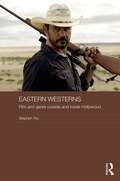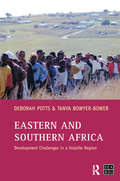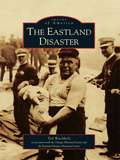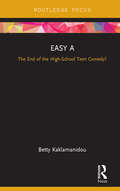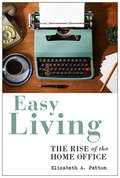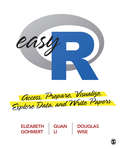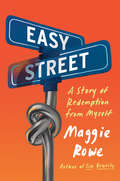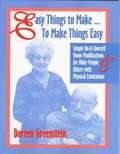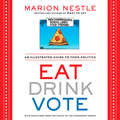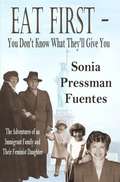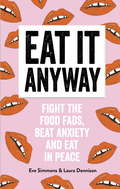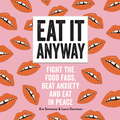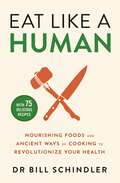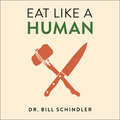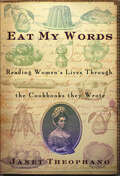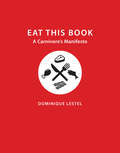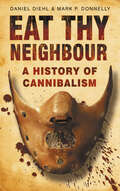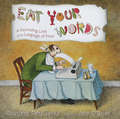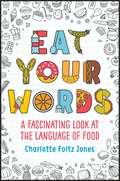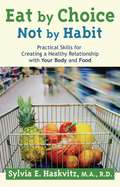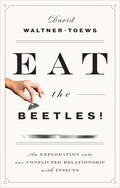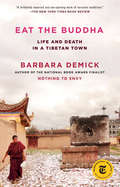- Table View
- List View
Eastern Westerns: Film and Genre Outside and Inside Hollywood (Media, Culture and Social Change in Asia)
by Stephen TeoThe western, one of Hollywood’s great film genres, has, surprisingly, enjoyed a revival recently in Asia and in other parts of the world, whilst at the same time declining in America. Although the western is often seen as an example of American cultural dominance, this book challenges this view. It considers the western from an Asian perspective, exploring why the rise of Asian westerns has come about, and examining how its aesthetics, styles and politics have evolved as a result. It analyses specific Asian Westerns as well as Westerns made elsewhere, including in Australia, Europe, and Hollywood, to demonstrate how these employ Asian philosophical and mythical ideas and value systems. The book concludes that the western is a genre which is truly global, and not one that that is purely intrinsic to America.
Eastern World Geography (World Geography: Eastern World Series)
by Houghton Mifflin HarcourtNIMAC-sourced textbook
Eastern and Southern Africa: Development Challenges in a volatile region (Developing Areas Research Group)
by Debby Potts T.A.S. Bowyer-BowerA unique and comprehensive introduction to contemporary development issues in East and Southern Africa, and represents a significant departure from the often descriptive approach adopted by existing regional and development texts on African regions. Each contribution is carefully chosen to highlight the theoretical basis to development issues, and the practical problems of implementing development plans, in this vital subregion. Overall this produces comprehensive and balanced coverage of historical, economic, political and social issues. The twin issues of globalisation and modernisation give the book a clear focus.
Eastland Disaster, The (Images of America)
by Chicago Historical Society land Disaster Historical Society Ted WachholzMore than 7,000 people living in the Chicago area and Michigan City, Indiana, eagerly anticipated Saturday morning, July 24, 1915. This particular Saturday was going to be anything but a routine summer day. Plans had been carefully made for it to be the social and entertainment event of the year, and for some, a lifetime. The fifth annual midsummer excursion and picnic had been organized by the employees of the Western Electric Company's Hawthorne Works. Thousands of carefree merrymakers would enjoy a festive day including a lovely cruise across Lake Michigan to an awaiting parade and day-long picnic. The day would conclude with an evening cruise back to Chicago. For thousands of hard-working immigrant laborers and their families and friends, it was going to be a day to remember. Instead, the day's scheduled event turned into a tragedy unlike any other. The SS Eastland, while still tied to the wharf, rolled into the Chicago River with more than 2,500 passengers on board. Nearly 850 people lost their lives, including 22 entire families. The ensuing struggle for survival, and the resulting death, heroism, cowardice, greed, and scandal gripped the city of Chicago.
Easy A: The End of the High-School Teen Comedy? (Cinema and Youth Cultures)
by Betty KaklamanidouEasy A (2010) is the last significant box-office success in the high-school teen movie subgenre and a film that has already been deemed a ‘classic’ by many cultural commentators and popular film critics. By applying interdisciplinary insight to a relatively overlooked movie in academic discussion, Easy A: The End of the High-School Teen Comedy? is the first in-depth volume that places the movie within several key contexts and concepts of intertextuality, gender, genre and adaptation, and social discourse. Through the unpacking of a complex narrative that draws its plot from Nathaniel Hawthorne’s The Scarlet Letter (1850) and shares affinities with John Hughes’ paradigmatic films from the 1980s and key films from the 1990s, this volume presents Easy A as a palimpsest for the millennial generation. Clear and comprehensive, the book argues that Easy A marks the end of the commercially successful high-school teen comedy and discusses the reasons through a comparative synchronic and semi-diachronic historical comparison of the film with contemporary cinematic texts and those of the 1980s and 1990s.
Easy Living: The Rise of the Home Office
by Elizabeth A PattonHow did Americans come to believe that working at home is feasible, productive, and desirable? Easy Living examines how the idea of working within the home was constructed and disseminated in popular culture and mass media during the twentieth century. Through the analysis of national magazines and newspapers, television and film, and marketing and advertising materials from the housing, telecommunications, and office technology industries, Easy Living traces changing concepts about what it meant to work in the home. These ideas reflected larger social, political-economic, and technological trends of the times. Elizabeth A. Patton reveals that the notion of the home as a space that exists solely in the private sphere is a myth, as the social meaning of the home and its market value in relation to the public sphere are intricately linked.
Easy R: Access, Prepare, Visualize, Explore Data, and Write Papers
by Elizabeth A. Gohmert Quan L. Li Douglas R. WiseDo you want to learn R? This book is built on the premise that anyone with a bit of free time and a healthy curiosity can learn to use R in their studies or at work. The authors focus on using R to do useful things like writing reports, creating data and graphs, accessing datasets collected by others, preparing data, and conducting simple data analysis. In this book you’ll learn how to: install R and RStudio®, and set up an RStudio® project and folders; write an essay with graphs based on simple real-world data using R Markdown; create variables from everyday numeric information and visualize data through five types of charts—bar plot, histogram, pie chart, scatter plot, and time series line plot—to identify patterns in the data; write and run R programs, and prepare your data following the tidyverse approach; import external datasets into R, install R data packages, and carry out initial data validity checks; conduct exploratory data analysis through three exercises involving data on voting outcomes, natural resource consumption, and gross domestic product (GDP) via data visualization, correlation coefficient, and simple regression; and write a research paper on the impact of GDP per capita on life expectancy using R Markdown. Student-friendly language and examples (such as binge-watched shows on Netflix, and the top 5 songs on Spotify), cumulative learning, and practice exercises make this a must-have guide for a variety of courses where data are used and reports need to be written. Code and datasets used to carry out the examples in the book are available on an accompanying website.
Easy R: Access, Prepare, Visualize, Explore Data, and Write Papers
by Elizabeth A. Gohmert Quan L. Li Douglas R. WiseDo you want to learn R? This book is built on the premise that anyone with a bit of free time and a healthy curiosity can learn to use R in their studies or at work. The authors focus on using R to do useful things like writing reports, creating data and graphs, accessing datasets collected by others, preparing data, and conducting simple data analysis. In this book you’ll learn how to: install R and RStudio®, and set up an RStudio® project and folders; write an essay with graphs based on simple real-world data using R Markdown; create variables from everyday numeric information and visualize data through five types of charts—bar plot, histogram, pie chart, scatter plot, and time series line plot—to identify patterns in the data; write and run R programs, and prepare your data following the tidyverse approach; import external datasets into R, install R data packages, and carry out initial data validity checks; conduct exploratory data analysis through three exercises involving data on voting outcomes, natural resource consumption, and gross domestic product (GDP) via data visualization, correlation coefficient, and simple regression; and write a research paper on the impact of GDP per capita on life expectancy using R Markdown. Student-friendly language and examples (such as binge-watched shows on Netflix, and the top 5 songs on Spotify), cumulative learning, and practice exercises make this a must-have guide for a variety of courses where data are used and reports need to be written. Code and datasets used to carry out the examples in the book are available on an accompanying website.
Easy Street: A Story of Redemption from Myself
by Maggie RoweA moving and offbeat story of unlikely friendship, the cost of ambition, and what happens when the things you&’ve always run away from show up on your doorstep. To most, Maggie Rowe appears to live on Easy Street. Her stylish home is in a fashionable Los Angeles neighborhood. She has a kind husband who makes her laugh. And after years of struggle, she is finally making a name for herself in Hollywood. But the agreeable, confident persona she presents to the world often feels like a deception to Maggie, who&’s long grappled with mental illness and feelings of inadequacy. Enter Joanna Hergert, a neurodiverse middle-aged woman who lives with her elderly mother. Maggie&’s husband, Jim, introduces her to the pair after meeting them at a local charbroiled chicken franchise. Over the next several years, she forms a friendship with Joanna and her mother—despite Joanna&’s robust romantic fixation on Jim. What begins as a mild curiosity soon blooms into a complicated and intimate friendship that will challenge Maggie to confront her mental health issues and the trade-offs she&’s made to live life on her own terms. Engrossing, moving, and wickedly funny, Easy Street is a midlife coming-of-age buddy comedy about embracing the strength of the families we fashion, finding peace with the choices we make, and, above all, learning to be compassionate with ourselves.
Easy Things to Make--To Make Things Easy: Simple Do-It-Yourself Home Modifications for Older People and Others with Physical Limitations
by Doreen GreensteinThe newest addition to Dr. Greenstein's practical how-to-do-it series for individuals with physical limitations. This delightfully illustrated, large-print format book is filled with suggestions to make life easier, safer, and more enjoyable for older people and others with physical limitations. Included are low-cost modification ideas for the home environment, ways to make daily activities more enjoyable, and important information for caregivers. All the adaptations described can be made easily and inexpensively, using common materials. Specific activities range from gardening with one hand to making a kitchen sink wheelchair-accessible.
Eat Drink Vote: An Illustrated Guide to Food Politics
by Marion NestleWhat's wrong with the US food system? Why is half the world starving while the other half battles obesity? Who decides our food issues, and why can't we do better with labeling, safety, or school food? These are complex questions that are hard to answer in an engaging way for a broad audience. But everybody eats, and food politics affects us all.Marion Nestle, whom Michael Pollan ranked as the #2 most powerful foodie in America (after Michelle Obama) in Forbes, has always used cartoons in her public presentations to communicate how politics—shaped by government, corporate marketing, economics, and geography—influences food choice. Cartoons do more than entertain; the best get right to the core of complicated concepts and powerfully convey what might otherwise take pages to explain.In Eat Drink Vote, Nestle teams up with The Cartoonist Group syndicate to present more than 250 of her favorite cartoons on issues ranging from dietary advice to genetic engineering to childhood obesity. Using the cartoons as illustration and commentary, she engagingly summarizes some of today's most pressing issues in food politics. While encouraging readers to vote with their forks for healthier diets, this book insists that it's also necessary to vote with votes to make it easier for everyone to make healthier dietary choices.
Eat First -- You Don't Know What They'll Give You
by Sonia Pressman FuentesSonia Pressman Fuentes, who was born in Berlin, Germany, came to the US as a child with her immediate family to escape the Holocaust. Her memoirs reveal how this five-year-old immigrant in 1934 grew up to become the first woman attorney in the Office of the General Counsel at the Equal Employment Opportunity Commission (EEOC) in 1965, one of the founders of the National Organization for Women (NOW) in 1966, the highest-paid woman at the headquarters of two multinational corporations--GTE and TRW, and an international speaker on women's rights for the US Information Agency. The author of this book donated a digital copy to Bookshare.org. Join us in thanking Sonia Pressman Fuentes for providing her accessible digital book to this community.
Eat It Anyway: Fight the Food Fads, Beat Anxiety and Eat in Peace
by Eve Simmons Dennison'One cannot think well, love well, sleep well, if one has not dined well.' - Virginia Woolf.The definition of 'healthy eating' has been chewed up, spat out and re-digested enough times to make Joe Public give up and seek out their nearest branch of McDonald's. Our mindless obsession with eating 'right' is such that we're now more concerned about what our Instagram followers think of a poorly lit picture of our dinner than we are of its effect on our own palate. Or, indeed, our happiness. We seem to be living in a time where we no longer eat with our hearts, emotions or heritage - but with what our waistlines (and followers) in mind.Not Plant Based are on a mission to help you love food again. The principle is very simple: eat what you like and don't worry about it. It's a menu that's especially delicious, 'guilt-free' and requires a hell of a lot less money spent in health food shops. Throughout the book, Laura and Eve call on experts to debunk myths and provide a balanced exploration of our attitude towards food, with some delicious recipes thrown in along the way. They discuss their own experiences of eating disorders and offer personal tips and coping mechanisms to help rid you of anxiety linked to food. No one is saying healthy eating is bad; there is simply a lot of misleading information out there. More to the point, food is so much more in the grand scheme of life than health: it's family, friends, enjoyment and memories. So go on, take a bite out of Eat It Anyway and learn to love your food all over again. It's SO mouth-wateringly good - we bet you'll be back for seconds.**PRAISE FOR EAT IT ANYWAY**'Learn to love food again with this book, which sorts nutritional nonsense from sensible science' - Woman's Weekly
Eat It Anyway: Fight the Food Fads, Beat Anxiety and Eat in Peace
by Eve Simmons Dennison'One cannot think well, love well, sleep well, if one has not dined well.' - Virginia Woolf.The definition of 'healthy eating' has been chewed up, spat out and re-digested enough times to make Joe Public give up and seek out their nearest branch of McDonald's. Our mindless obsession with eating 'right' is such that we're now more concerned about what our Instagram followers think of a poorly lit picture of our dinner than we are of its effect on our own palate. Or, indeed, our happiness. We seem to be living in a time where we no longer eat with our hearts, emotions or heritage - but with what our waistlines (and followers) in mind.Not Plant Based are on a mission to help you love food again. The principle is very simple: eat what you like and don't worry about it. It's a menu that's especially delicious, 'guilt-free' and requires a hell of a lot less money spent in health food shops. Throughout the book, Laura and Eve call on experts to debunk myths and provide a balanced exploration of our attitude towards food, with some delicious recipes thrown in along the way. They discuss their own experiences of eating disorders and offer personal tips and coping mechanisms to help rid you of anxiety linked to food. No one is saying healthy eating is bad; there is simply a lot of misleading information out there. More to the point, food is so much more in the grand scheme of life than health: it's family, friends, enjoyment and memories. So go on, take a bite out of Eat It Anyway and learn to love your food all over again. It's SO mouth-wateringly good - we bet you'll be back for seconds.(p) 2019 Octopus Publishing Group
Eat Like a Human: Nourishing Foods and Ancient Ways of Cooking to Revolutionise Your Health
by Bill SchindlerVegan or carnivore? Vegetarian or gluten-free? Keto or Mediterranean? Fasting or Paleo? Our relationship to food is filled with confusion and insecurity. Every day we hear about a new ingredient that is good or bad, a new diet that promises everything. But the truth is that none of those labels matter. The secret to becoming healthier, losing weight, living a pain-free and energetic life and healing the planet has nothing to do with counting calories, reducing portion sizes or feeling deprived - the key is re-learning how to eat like a human.This means finding food that is as nutrient-dense as possible, and preparing that food using methods that release those nutrients and make them safe and bioavailable to our bodies, which is exactly what allowed our ancestors, millions of years ago, to not only live but thrive. Archaeologist and primitive technologist Dr Bill Schindler draws on cutting-edge science and a lifetime of research to show readers how to live like modern 'hunter-gatherers' by using the same strategies our ancestors used - as well as techniques still practiced by many cultures around the world - to make food as safe, nutritious, bioavailable and delicious as possible.With each chapter dedicated to a specific food group, in-depth explanations of different foods and cooking techniques and concrete takeaways, as well as 75+ recipes, Eat Like a Human will permanently change the way you think about food, and help you live a happier, healthier, and more connected life.
Eat Like a Human: Nourishing Foods and Ancient Ways of Cooking to Revolutionise Your Health
by Bill SchindlerBill Schindler takes us deep into his lifetime of archaeological research to show us why and how our dietary choices and cooking techniques need to follow our ancestors' lead and focus on nutrient density and bioavailability.Our relationship to food is filled with confusion and insecurity. Vegan or carnivore? Vegetarian or gluten-free? Keto or Mediterranean? Fasting or Paleo? Every day we hear about a new ingredient that is good or bad, a new diet that promises everything. Our conversations are filled with a dizzying array of approaches to and perspectives on our relationship with food. But the truth is that none of those labels matter. The secret to becoming healthier, losing weight, living a pain-free and energetic life and healing the planet has nothing to do with counting calories, reducing portion sizes or feeling deprived - the key is re-learning how to eat like a human.This means finding food that is as nutrient-dense as possible, and preparing that food using methods that release those nutrients and make them safe and bioavailable to our bodies, which is exactly what allowed our ancestors, millions of years ago, to not only live but thrive. In Eat Like a Human, archaeologist and primitive technologist Dr Bill Schindler draws on cutting-edge science and a lifetime of research to explain how safety, nutrient density and bioavailability are the cornerstones of a healthy diet. He shows readers how to live like modern 'hunter-gatherers' by using the same strategies our ancestors used - as well as techniques still practiced by many cultures around the world - to make food as safe, nutritious, bioavailable and delicious as possible.With each chapter dedicated to a specific food group, in-depth explanations of different foods and cooking techniques and concrete takeaways, as well as 75+ recipes, Eat Like a Human will permanently change the way you think about food, and help you live a happier, healthier, and more connected life.(P)2022 Hachette Audio
Eat My Words: Reading Women's Lives Through the Cookbooks they Wrote
by Janet TheophanoSome people think that a cookbook is just a collection of recipes for dishes that feed the body. In Eat My Words: Reading Women's Lives through the Cookbooks They Wrote, Janet Theophano shows that cookbooks provide food for the mind and the soul as well. Looking beyond the ingredients and instructions, she shows how women have used cookbooks to assert their individuality, develop their minds, and structure their lives. Beginning in the seventeenth century and moving up through the present day, Theophano reads between the lines of recipes for dandelion wine, "Queen of Puddings," and half-pound cake to capture the stories and voices of these remarkable women.The selection of books looked at is enticing and wide-ranging. Theophano begins with seventeenth-century English estate housekeeping books that served as both cookbooks and reading primers so that women could educate themselves during long hours in the kitchen. She looks at A Date with a Dish, a classic African American cookbook that reveals the roots of many traditional American dishes, and she brings to life a 1950s cookbook written specifically for Americans by a Chinese émigré and transcribed into English by her daughter. Finally, Theophano looks at the contemporary cookbooks of Lynne Rosetto Kaspar, Madeleine Kamman, and Alice Waters to illustrate the sophistication and political activism present in modern cookbook writing. Janet Theophano harvests the rich history of cookbook writing to show how much more can be learned from a recipe than how to make a casserole, roast a chicken, or bake a cake. We discover that women's writings about food reveal--and revel in--the details of their lives, families, and the cultures they help to shape.
Eat This Book: A Carnivore's Manifesto (Critical Perspectives on Animals: Theory, Culture, Science, and Law)
by Dominique LestelIf we want to improve the treatment of animals, Dominique Lestel argues, we must acknowledge our evolutionary impulse to eat them and we must expand our worldview to see how others consume meat ethically and sustainably. The position of vegans and vegetarians is unrealistic and exclusionary. Eat This Book calls at once for a renewed and vigorous defense of animal rights and a more open approach to meat eating that turns us into responsible carnivores. Lestel skillfully synthesizes Western philosophical views on the moral status of animals and holistic cosmologies that recognize human-animal reciprocity. He shows that the carnivore's position is more coherently ethical than vegetarianism, which isolates humans from the world by treating cruelty, violence, and conflicting interests as phenomena outside of life. Describing how meat eaters assume completely—which is to say, metabolically—their animal status, Lestel opens our eyes to the vital relation between carnivores and animals and carnivores' genuine appreciation of animals' life-sustaining flesh. He vehemently condemns factory farming and the terrible footprint of industrial meat eating. His goal is to recreate a kinship between humans and animals that reminds us of what it means to be tied to the world.
Eat This Book: A Year of Gorging and Glory on the Competitive Eating Circuit
by Ryan NerzFrom the Publisher: Sparing no one's appetite, Nerz reveals the training, game-day strategies, and after-effects of competition in this delectably shocking banquet of gorging and glory on the competitive eating circuit. With barbecue sauce-soaked tongue planted firmly in cheek, Nerz chronicles his amusing adventures in the perverse, repellent, strangely heroic world of "competitive eating." Having moved beyond county fair pie-eating contests, competitive eating is now a global challenge involving national pride, superstars and, in 2005, $200,000 in prize money. Freelance journalist Nerz falls in with the denizens of this world while covering the Nathan's Famous Fourth of July International Hot Dog-Eating Contest for the Village Voice. There, the diminutive Japanese Takeru Kobayashi overturns years of American dominance by consuming 50 hot dogs and buns in 12 minutes. From the gastronomical excesses of Coney Island, it's a short hop to the sadomasochistic extremes of Japan, where, during the Superman Dash, "Hungry" Charles Hardy and Kazutoyo Arai devour 180 bento box lunches between them. Along the way, records are broken and countless calories are consumed. Hired by the International Federation of Competitive Eating (IFOCE), Nerz travels the U.S., promoting jambalaya-eating contests in New Orleans, chicken-eating blowouts in Philadelphia and fried asparagus feasts in Sacramento. Despite disgusting details-vomiting, distended bellies, etc.-Nerz presents his story with glee and good humor. 30 pages of b&w photos. --Publisher's Weekly
Eat Thy Neighbour: A History of Cannibalism
by Daniel Diehl Mark P DonnellyCannibalism is unquestionably one of the oldest and deepest-seated taboos. Even in an age when almost nothing is sacred, religious, moral and social prohibitions surround the topic. But even as our minds recoil at the mention of actual acts of cannibalism there is some dark fascination with the subject. Appalling crimes of humans eating other humans are blown into major news stories and gory movies: both Hitchcock's Psycho and The Texas Chainsaw Massacre were based on the crimes of Ed Gein, who is profiled, along with others, in this book. In Eat Thy Neighbour the authors put the subject of cannibalism into its social and historical perspective.
Eat Your Words
by John O'Brien Charlotte JonesBaked Alaska, melba toast, hush puppies, and coconuts. You'd be surprised at how these food names came to be. And have you ever wondered why we use the expression "selling like hotcakes"? Or how about "spill the beans"? There are many fascinating and funny stories about the language of food--and the food hidden in our language! Charlotte Foltz Jones has compiled a feast of her favorite anecdotes, and John O'Brien's delightfully pun-filled drawings provide the dessert. Bon appetit!
Eat Your Words: A Fascinating Look At The Language Of Food
by Charlotte Foltz Jones John O'BrienBaked Alaska, melba toast, hush puppies, and coconuts. You'd be surprised at how these food names came to be. And have you ever wondered why we use the expression "selling like hotcakes"? Or how about "spill the beans"? There are many fascinating and funny stories about the language of food--and the food hidden in our language! Charlotte Foltz Jones has compiled a feast of her favorite anecdotes, and John O'Brien's delightfully pun-filled drawings provide the dessert. Bon appetit!
Eat by Choice, Not by Habit
by Sylvia HaskvitzCombining sound dietary information with the techniques of the Nonviolent Communication (NVC) process, this booklet shifts the focus from simple weight loss to changing the ways readers relate to food and their food choices. Eating is a need, but for those caught in cycles of overconsumption and dieting, it's often a poor attempt to meet other needs, such as emotional fulfillment. When reconnected to actual needs, however, consumption habits turn into nutritional choices, signaling greater freedom. Practical strategies are outlined for breaking out of cycles of eating and becoming aware of one's needs. Rather than being a proscriptive fad diet, the suggestions encourage readers to explore the emotional consciousness that underlies their eating patterns, freeing them to once again enjoy the tastes, smells, and sensations of good eating.
Eat the Beetles!: An Exploration into Our Conflicted Relationship with Insects
by David Waltner-Toews&“Provides a sturdy literary exoskeleton to the field of human insectivory . . . it entertains as it enlightens&” (Daniella Martin, author of Edible). Meet the beetles: there are millions and millions of them and many fewer of the rest of us—mammals, birds, and reptiles. Since before recorded history, humans have eaten insects. While many get squeamish at the idea, entomophagy—people eating insects—is a possible way to ensure a sustainable and secure food supply for the eight billion of us on the planet. Once seen as the great enemy of human civilization, destroying our crops and spreading plagues, we now see insects as marvelous pollinators of our food crops and a potential source of commercial food supply. From upscale restaurants where black ants garnish raw salmon to grubs as pub snacks in Paris and Tokyo, from backyard cricket farming to high-tech businesses, Eat the Beetles! weaves these cultural, ecological, and evolutionary narratives to provide an accessible and humorous exploration of entomophagy. &“Waltner-Toews punctuates this serious subject with his quirky humour . . . Eat the Beetles! is an essential part of a growing buzz.&” —Toronto Star &“An excellent read for those interested in multiple perspectives on the issue of entomophagy, digging deep into science and math with flair and irreverence.&” —Scene Magazine &“When it comes to the future of insects as food for humans and livestock, Waltner-Toews walks the line between skepticism and optimism in an intelligent, witty, and provocative analysis.&” —Jeff Lockwood, author of The Infested Mind &“Full of humor and science, this edible insect book is definitely a must read!&” —EntoMove Project
Eat the Buddha: Life and Death in a Tibetan Town
by Barbara DemickA gripping portrait of modern Tibet told through the lives of its people, from the bestselling author of Nothing to Envy. &“You simply cannot understand China without reading Barbara Demick on Tibet.&”—Evan Osnos, author of Age of Ambition Just as she did with North Korea, award-winning journalist Barbara Demick explores one of the most hidden corners of the world. She tells the story of a Tibetan town perched eleven thousand feet above sea level that is one of the most difficult places in all of China for foreigners to visit. Ngaba was one of the first places where the Tibetans and the Chinese Communists encountered one another. In the 1930s, Mao Zedong&’s Red Army fled into the Tibetan plateau to escape their adversaries in the Chinese Civil War. By the time the soldiers reached Ngaba, they were so hungry that they looted monasteries and ate religious statues made of flour and butter—to Tibetans, it was as if they were eating the Buddha. Their experiences would make Ngaba one of the engines of Tibetan resistance for decades to come, culminating in shocking acts of self-immolation. Eat the Buddha spans decades of modern Tibetan and Chinese history, as told through the private lives of Demick&’s subjects, among them a princess whose family is wiped out during the Cultural Revolution, a young Tibetan nomad who becomes radicalized in the storied monastery of Kirti, an upwardly mobile entrepreneur who falls in love with a Chinese woman, a poet and intellectual who risks everything to voice his resistance, and a Tibetan schoolgirl forced to choose at an early age between her family and the elusive lure of Chinese money. All of them face the same dilemma: Do they resist the Chinese, or do they join them? Do they adhere to Buddhist teachings of compassion and nonviolence, or do they fight? Illuminating a culture that has long been romanticized by Westerners as deeply spiritual and peaceful, Demick reveals what it is really like to be a Tibetan in the twenty-first century, trying to preserve one&’s culture, faith, and language against the depredations of a seemingly unstoppable, technologically all-seeing superpower. Her depiction is nuanced, unvarnished, and at times shocking.
